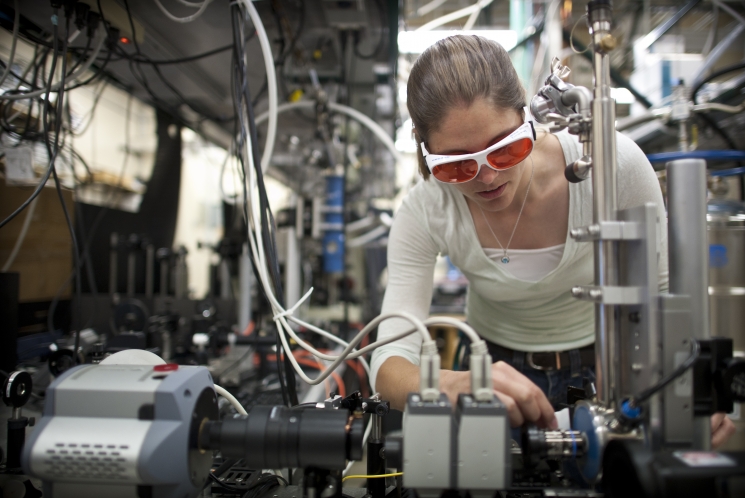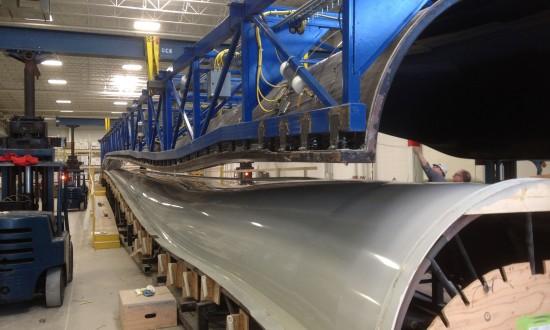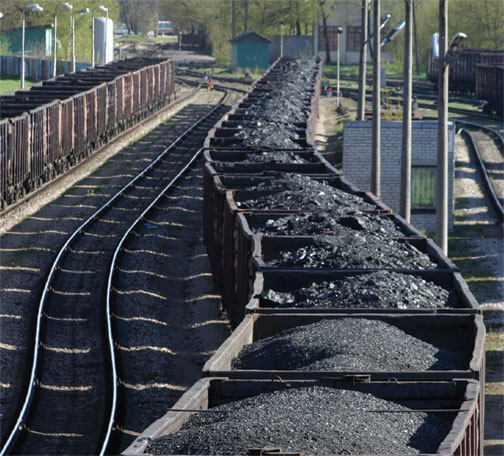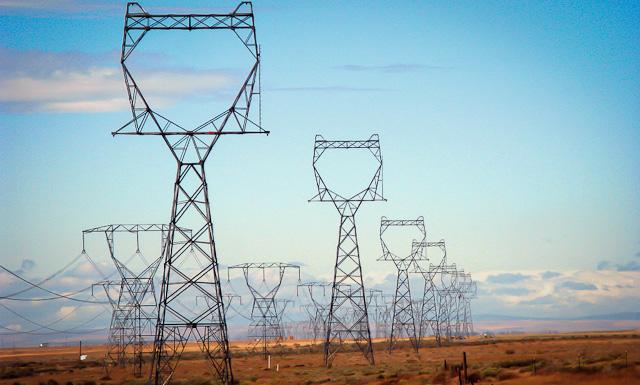
A researcher at the Solar Energy Research Facility. Photo: Dennis Schroeder, National Renewable Energy Laboratory.
A state ballot proposal could create nearly 75,000 Michigan “job years” by 2025, according to an energy policy impact report released this year.
So just what is a job year? That’s a concept puzzling Michigan voters facing a November ballot initiative that could require 25 percent of that state’s energy to come from renewable sources by 2025.
Supporters cite the job year figure from a Michigan State University report. A job year is a full-time job sustained for a year. That could translate to anything from 75,000 people working for a year to 2,500 people working for 30 years.
Critics say it’s deceptive.
“Their jobs claims have changed with the wind, literally,” said Megan Brown, spokeswoman for the CARE for Michigan Coalition, which supports clean energy but disagrees with the proposal.
It’s unclear from the report how many people will actually be employed if the proposal passes.
The initiative could create 31,513 job years in construction and 42,982 job years in operations and maintenance, said report author Benjamin Calnin, informatics and decision support coordinator at MSU’s Land Policy Institute.
There’s also potential for additional jobs within Michigan’s manufacturing sector, Calnin wrote in an email.
That could be anywhere from 3,935 job years to 39,350 job years in large-scale wind turbine manufacturing alone, depending on how well Michigan manufacturers do in that market, the report said.
“Michigan has an outstanding manufacturing history,” said Mark Fisk, spokesman for Michigan Energy Michigan Jobs, the group pushing the 25 percent renewable energy standard. “We have the workers, the businesses and the know-how to be a leader in clean energy.”

Manufacturing of fiberglass wind turbine blades in a Michigan factory. Photo: U.S. Department of Energy.
It wouldn’t be the first Great Lakes state to set an ambitious energy standard. Minnesota, Illinois and Ohio have all passed statutes locking them in to 25 percent renewables by 2025.
But it’s hard to make comparisons. Some states define renewable energy more loosely than others.
“There is considerable difference between Michigan’s proposal and the situation in those three states,” said Ken Sikkema, former senate majority leader and senior policy adviser for the CARE for Michigan Coalition, which opposes the measure.
Advocates of the renewable energy proposal often compare Michigan’s energy plan to Ohio’s. But Michigan’s plan is more restrictive, only including wind, solar, biomass or hydropower as plausible renewable energy sources, Sikkema said.
Only half of Ohio’s 25 percent must come from such renewable sources, he said. The other half can come from alternative energy sources like nuclear power, “clean coal” and energy efficiency programs, making it easier for Ohio to reach its 25 percent renewable energy goal.
New York has the whole region beat with its goal of 30 percent renewables by 2015. But its renewable energy program is even more inclusive than Ohio’s.

Photo: U.S. Department of Energy.
What makes Michigan’s energy proposal stand out is that all of the jobs created from the initiative will be in-state, Fisk said. That means all of the construction, manufacturing, and operations and management positions created from the proposed law must be filled by Michiganders.
While doing it that way may ensure more in-state jobs, it may be more expensive, Sikkema said.
“Illinois allows the state to purchase renewable energy from out-of-state so it can meet its standard by buying inexpensive wind power from Iowa,” Sikkema said. In fact, most states allow outsourcing of manufacturing and renewable power to reach their energy goals because it’s cheaper and more realistic, he said.
But coupling Michigan job growth to renewable energy intrigues supporters in comparison to the limited in-state jobs provided by the coal industry.

Photo: Argonne National Laboratory.
Coal accounts for around 60 percent of Michigan’s energy and all of it must be imported from other states. The annual cost of coal used for Michigan electricity is about $1.39 billion, said Judy Palnau, spokeswoman for the Michigan Public Works Commission.
“About 82 percent of the coal burned in Michigan power plants is supplied from the Powder River basin in Wyoming and Montana,” Palnau said. The rest comes from other states like West Virginia, Kentucky, Ohio, Indiana and Pennsylvania.
So not only does Michigan import its coal, it imports most of it from outside the Great Lakes basin. The renewable requirement would mean some of that money would instead support in-basin jobs.
Illinois, Pennsylvania, Indiana and Ohio mine some coal; the other four Great Lakes states import it from other states or countries.
Most of the region’s coal comes from Wyoming, according to the most recent data from the U.S. Energy Information Administration.
Indiana purchased 64,108 tons of coal in 2010, the largest amount in the Great Lakes basin that year, according to the U.S. energy agency. New York purchased the lowest amount at 5,892 tons.

Photo: U.S. Department of Energy.
If passed, the proposal would amend Michigan’s constitution, unlike the statute passed in 2008 by the Michigan Legislature to operate on 10 percent renewable energy by 2015. Supporters say voters need the constitution amendment because lawmakers have not indicated sufficient interest in doing it legislatively.
Though many people support Michigan’s ambitious renewable energy plan, some are also concerned with the way in which it would be passed.
No matter the job benefits, there’s no doubt that this energy proposal would be a significant undertaking for Michigan. Using TV ads to quickly push this ballot proposal into Michigan law is the wrong way to do it, Sikkema said.
“Complex policy issues really need to be decided by the legislature, where you can have debate and scrutiny of these issues,” he said.
Proposal supporters counter that the legislature refuses to act and that the ballot proposal can compel the state to move ahead.
Related Stories:
Energy policy by constitutional amendment debated
Neighboring states eye Michigan’s energy ballot proposal
Bill may increase energy competitiveness
The reason why politicians, especially Repugs, don’t want any of the proposals to pass is because it takes power away from them and puts it into the hands of the voting public. Politicians and bureaucrats have not been tending to their business unless it benefits themselves, they couldn’t care less about the people. When politicians have less power to offer to corporate lobbyists they have less to gain. All of these proposals have arisen because certain segments of the populace are rebelling against being marginalized by the politicians that we hire, while they create sweetheart deals for themselves. This backlash has been a long time coming, but, come it has and it won’t go away until we have politicians that serve the people instead of themselves. There are several redundancies in this comment, but, they are necessary to drive the point home that we won’t take it anymore. Vote out every incumbent Repug that we can and hog tie their replacements.
Very importantly, there are no limits on the amount of biomass that will be used to reach the 25% goal. In fact, the central goal of the the steering committee which is composed of big agriculture and big timber interests is to grow and burn our fuel. Go to 25×25.org and take a good hard look at the “vision and plans” for the “forests and farms” of America.
As we all should realize by now, biomass burning is neither renewable nor green. In fact, the EPA has recently ruled that biomass be excluded from rules governing renewables in Massachusetts. The carbon neutrality claim is false. I urge all good intentioned environmentalists to do a little research before voting yes on Proposal 3.
Nobiomassburning.org, energyjustice.org
Pingback: Walmart powers up Red Bluff wind turbine | Conquerall Electrical
“Complex policy issues really need to be decided by the legislature, where lobbyists have a better chance of controlling their pawns,” he thought.